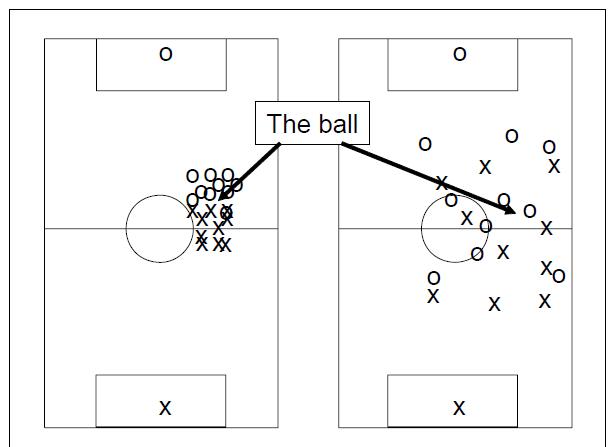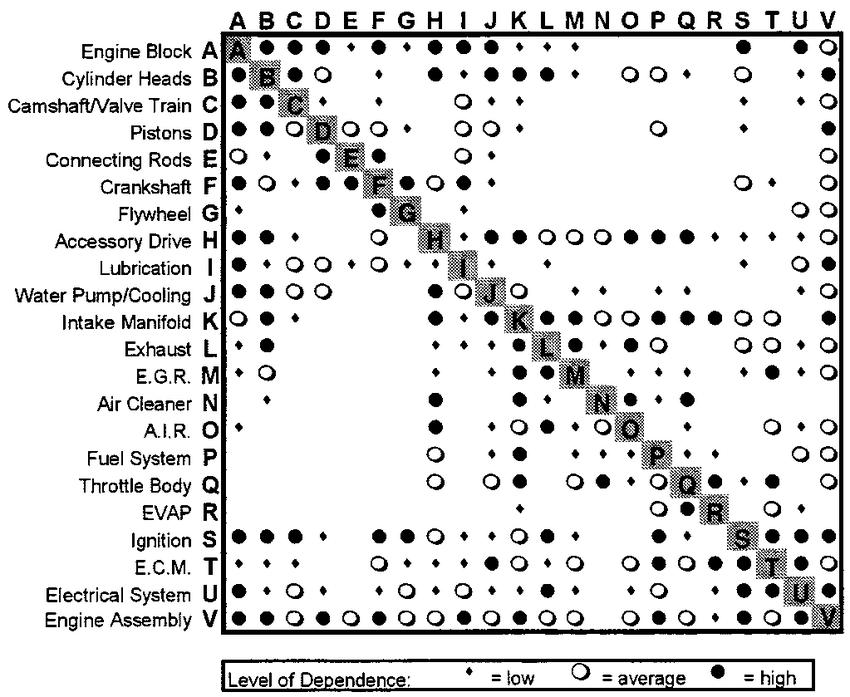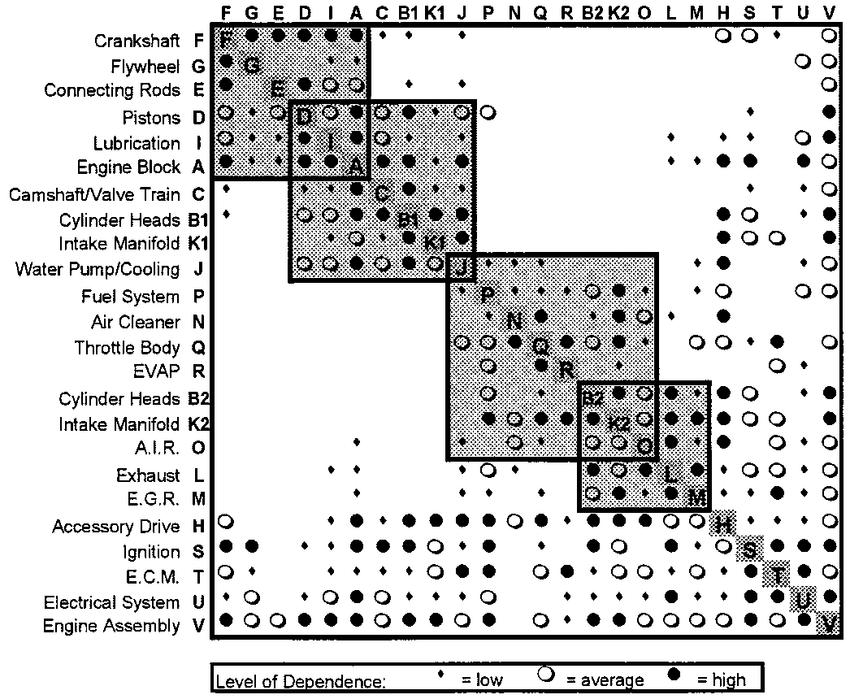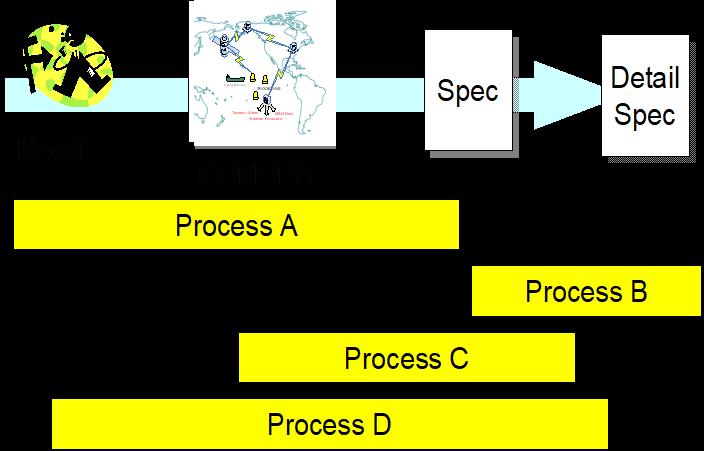
14 minute read
Moving Up Through Levels of Practice in Systems Engineering
With systems engineeri ng and the projects that it undertakes becomi ng ever more complex, should we be looking beyond the familiar “V” diagram?
By James R. Armstro ng
Copyrig ht © 2021 by James R. Armst ro n g. All rights reserv ed . Authored for PPI SyEN.
Abstract: Systems engineering is often viewed as a particular set of processes applied with some tailoring in a variety of situations and relying on the concepts defined in the general models of the practice. Once the relationship to a particular model is established, it typically is maintained across all applications. Using analogies from sports, science, and other fields, this article suggests that we need to actively progress our thinking and practice past the limits of the most popular models, pointing to several activities that currently are attempting to do so.
Introduction
The “V” model (Figure 1) is widely utilized to visualize the overall concept of an end-to-end systems-engineering process. It is quite useful in explaining the approach of decomposing needs into the component level, then building components into a solution at the system level. However, when the model is used as the primary driver for systems-engineering processes and application, misunderstanding and misapplication of it can be problematic for the systems involved. Fortunately, there are adjuncts and approaches that can help systems engineers to progress past this basic view to a more complete practice of the discipline.
Examples of Practice Changes in Sports
A prior paper (Armstrong, 2006) used a sports analogy to characterize the role of the system integrator. A similar analogy can be made to the general practice of systems engineering, with particular attention paid to the need for continued advancement – not just in the skills of individual practitioners, but also in the way in which systems engineering is understood and described as a discipline. In several years of coaching, playing, and watching various sports, I’ve noticed that as the players progress from beginners to advanced levels, not only do the skills improve and change, but the game itself changes. This is particularly true in soccer (“football” to the world outside of the USA). As the game progresses from five-year-old children to top professional ranks, there are definite and significant changes in the game at various points. The player or coach must understand and master the change to rise to the next level. At the beginning level, a cloud of preschool children can be seen mobbed around the ball, with everybody chasing it up and down the
field like a cloud of gnats. Out of this, a few more skillful players begin to emerge, but the game remains essentially the same. The first real change is also the most visually obvious, as shown in Figure 2. Players learn basic positions and play spread-out over the field. The basic skills of running and kicking are still applicable, but to these, the mental understanding of positions and how to play them are added.

Figure 2: First game-change in soccer
From this point, the next change is the addition of basic passing and longer kicks to send the ball down the field. This style of play can be described as kickball because most of the play consists of individual players kicking the ball forward with little apparent further thought. After this stage, teams learn to pass more effectively to their teammates and to get in position to receive passes. Control of the ball becomes more important, and emphasis shifts to maneuvering as a unit offensively and defensively. Emerging subtleties can become important: in one high-school championship game, the difference was the abilities of the winner to complete short passes in traffic, as opposed to longer passes in open space. As the practice progresses to higher levels, teams also learn scripted offensive and defensive plays. At first, those plays are attempted as planned and practiced with the assumption that they will work. When they don’t, the individual players improvise. As the skill levels progress, teams learn how to respond to different situations together and adjust as a unit. Further change has come from introduction of analytics into sports. The first significant application was in baseball, and this affected everything: choice of whom to play, what skills to teach, and even gameplay itself, as offenses and defenses adjusted (often in real time) as suggested by analysis of historical data, instead of staying with generally accepted approaches. Exaggerated shifts in field positions for certain batters are the most obvious evidence; pitchers worrying less about avoiding the center of the plate on a first pitch fastball and giving up fewer walks is a less obvious result. Overall, the reliance on data has again produced a different game. The basic takeaway from these examples in sports is that the game itself changes as each new level is achieved. Not all differences may be as obvious as the change from “cloud” to “position”, or as that from “kickball” to “possession”, but they are critical to the teams and players advancing to that next level.
Example of Practice Changes in Science
The field of theoretical physics is another example where “the game” itself has changed as the tools and techniques have improved. Sir Isaac Newton generated his laws of motion and of gravity, which sufficed to explain physics for many years. Albert Einstein then introduced his Theory of Relativity, which allowed a far more complete view of time, space, and the universe. Then came Quantum Theory and String Theory, which addressed several observations that prior theories could not explain. Recently, physicists have started measuring the once theoretical gravity waves, and the field of astrophysics keeps changing with each new concept that graduates from informed speculation to demonstrated proof. These were not linear, incremental changes to the practice of the discipline: these were game changers that transformed not only how physicists did what they did, but also what they did, and even why they did it. As powerful as they once were, Newtonian physics are now of limited value in answering current questions.
Relevance to Systems Engineering
As suggested earlier, misunderstanding and misapplication of the classical “V” model for systems engineering can be problematic for both the engineers and the systems involved. The most common problem is overemphasis of a distinct separation and serialization of the left and right sides of the “V”. Such perspective implies that integration, verification, and validation are performed only after the system has been completely designed and its top-level build has commenced. This assumption can miss early opportunities to verify requirements against architectures, designs, models, and prototypes – or even to verify and validate the requirements themselves. Similarly, there can be the mistaken assumption that requirements are captured completely early in the program and do not change thereafter – but real-life experience demonstrates that acquisition and refinement of requirements often continue throughout the development of the functional and physical architecture. Another potential issue with the “V” is that its initial emphasis on decomposition, from the system level down to constituent components, can allow engineers to underappreciate some of the holistic characteristics and requirements that are set aside during that decomposition. Such underappreciation tends to allow a reductionist perspective to creep into the subsequent bottom-up assembly and integration of components. When this is combined with a lack of integration activities in earlier phases, many cross-component issues are not discovered until late in the program. Is it possible for systems engineering to take a lesson from sports and science, by improving its tools and skills such as the “V” model to bring a whole new level of elevated play and thereby changing the “game” itself? Figure 3 shows the classical “V” model in gray, unfolded in a way that suggests a waterfall (another common depiction of the systemsengineering process). This downplays the hierarchical decomposition and re-assembly, but the retained activities and sequence still suggest hard demarcation between activities that precede detail-design and activities that follow it – and they still suggest that formulaic following of this sequence is sufficient to complete the development program. This adaptation of the “V” model can be modified further to recognize and illustrate the continuous overlap of all activities throughout the program, as shown by the addition of the green bars in Figure 3. For example, despite best efforts to capture requirements at the start of development, few real-life programs are completely able to avoid modified or
incremental requirements and the resulting rework. Similarly, it is possible to perform at least initial subsets of integration, verification, and validation early in the program, when any issues uncovered are much less expensive to correct – thereby reducing risk to the program. As a result, this model-variant supports the continuous involvement of all activities as defined in Integrated Product Development. Cascades or further variants can show the repeated cycles of the flow for incremental or agile developments. However, the development process for real systems of any size seldom precisely follows an exact, prescriptive sequence. At any point in the developmental timeline, some components or technologies may still be in research stages, with others may already in production. Some early or inherited decisions may constrain subsequent choices beyond the ability of the system architecture, interfaces, and allocations to adjust and to accommodate, mandating revisitation. Few models sufficiently address any preceding or facilitating activities (such as research) or the production, operations, and maintenance phases which also often involve and require systems engineering. A more complete concept of the actual interaction of systems engineering activities might be better modeled as a neural network. As with the neurons in the brain, each part is continuously performing the appropriate tasks for the overall job, having multiple continuous connections with other participants but not necessarily continuous interaction. One such approach to model the interaction among team members has been defined by Tyson Browning, using Design Structure Matrices (DSMs, an application of N2 matrices). The approach was initially applied to grouping software functionality to reduce the complexity of external interfaces among modules. Figure 4 shows the same approach used to look at the interactions among various development-team members to determine which of them need to communicate in which groupings. In some instances, the identified optimal groupings are not those planned in traditional integrated team meetings.


Figure 4: Example of a design-structure matrix (DSM) for software functionality
(T. R. Browning, Applying the Design Structure Matrix to System Decomposition and Integration Problems: A Review and New Directions, IEEE Transactions on Engineering Management, VOL. 48, NO. 3, August 2001)
Another potential “next level” in systems engineering is to view its processes more like designed plays in sports: laying out a basic plan for execution, but with a contingency plan that prepares for possible deviations from expected outcome. Such deviations include detected failures in the system design, whether through early peer reviews, digital models, prototypes, or verification or validation testing. While every company has some form of review process to determine how to respond when a failure is detected, not enough of them have standard mechanisms to analyze all such failures and to implement risk-based remediation based upon that analysis as feedback into the development process. For example, fully implemented Orthogonal Defect Classification (ODC) not only identifies the fix for an individual failure, but it also finds and addresses the root causes of the failure’s occurrence and evasion of earlier detection – even looking across projects to find patterns across the organization. The Capability Maturity Model Integration (CMMI®) defines a set of levels of capability for an organization’s processes to meet its goals, and these levels can be applied to the practice of systems engineering. These levels range from the first level (characterized by processes that are poorly planned and controlled) to the fifth level (focusing on continual improvement). This roughly parallels evolution in sports, from individual play, to team play, then to reliance upon analytics. While the CMMI® has been criticized when too much emphasis is been placed on achieving a specific score, it also has provided significant benefit when used to assess what is working, what is not, and through which next steps to improve.
Application to Individuals & Organizations
Most systems engineers start out in another engineering discipline, then transition into system engineering with progressively greater scope. A recent study on the development of systems engineering expertise (Armstrong, 2017) identified a typical progression: from limited responsibility at the component level, to subsystems, to systems, and finally to systems of systems. Systems engineers also need to learn about other engineering disciplines that contribute to the projects on which they work. As the scope and complexity of systems grow, so also does the need for greater leadership, coordination, and cooperation. However, if one’s understanding of the process of systems engineering is limited by the simple description of the classical “V” model, the progress may not be as successful as needed.
Companies also have growth patterns. Many are founded on the technical accomplishment of one or more individuals, and several have grown quite large with maintaining the “hero culture” that relies on an individual to save the day. Others started out building components, and while some stay in that focus, others either chose or are forced to move up to subsystems or systems. Delphi Automotive, for example, was primarily a component provider, before undertaking the On-Star system. As such shifts occur, there will be changes in the way systems engineering is practiced. A company’s architecture-level drives the focus of its requirements processes, as shown in Figure 5. A company at the systems level is focused on the need level down (process A), while a company at the component level is focused on the incoming specifications and their internal design efforts (process B). If an organization wishes to change their work, or if an individual wishes to move to another company that is working at a different architectural level, the game will change, and they will have to make the adjustments to be successful.

Figure 5: Variations in scope of requirements-design processes
Reluctance and Learning
Once any level of success has been achieved, there is commonly a reluctance to changing the approach that has brought the current success. This is true in sports as well as the workplace. One team of new soccer players at the “cloud” level in development wasn’t progressing very quickly from just listening to the coaches’ instructions. However, one day they were warming up where they could observe two other games in their youth league: on one field were two of the bottom teams in the league playing “cloud” soccer, and on the other field were two top teams spread out in positions. Even 6–8-year-olds could not miss the point of which teams they wanted to emulate. At a higher level, a team of early teens had been successful in the prior years playing the “kickball” style of soccer. When they aged into the high school league, they were hesitant to change what had been successful. It took a few loses to incentivize learning. In the field of theoretical physics, one adage is that the practice only changes when the old physicists die out. In systems engineering, companies are most incentivized to change their practice when they lose a bid to a competitor, when a customer complains, or when they forfeit a significant award fee or progress payment. Of course, many organizations and individuals recognize value in upping their game without waiting for these types of pressures: the current level, its strengths and weaknesses, and the next steps to improve can be identified and action taken to make the move to the new game.
What Next?
George Box is often quoted as saying, “All models are wrong, but some are useful.” (Box, 1979) Even the best models only approximate reality, so the real question is, "Is a given model good enough for a particular application?" The current updates to ISO/IEC 15288 and the INCOSE SE Handbook are moving away from the left/right view of limited application of processes, to full life-cycle applications. This should help drive the practices to a more integrated view of the individual processes. However, it will take a willingness of companies, management, and practitioners to think more complexly about systems engineering and not require a simple explanation that can be used in all situations.
References
Armstrong, J., Klue, G., and Stall, A. (Nov, 2006) Integration of Processes on a Multiorganization Program, Systems and Software Consortium, Herndon, VA. Box, G. E. P. (1979), "Robustness in the strategy of scientific model building", in Launer, R. L.; Wilkinson, G. N. (eds.), Robustness in Statistics, Academic Press, pp. 201–236, doi:10.1016/B978-0-12-438150-6.50018-2, ISBN 9781483263366.
About the author
James R. Armstrong has practiced systems engineering for 54 years, performing various roles including configuration management, test, deployment, chief engineer, program manager, and program element monitor. For the last 30 years, he taught, consulted, and appraised systems engineering in industry and government, and he has been on the author teams for several systemsengineering standards and models. He has a BS in Mechanical Engineering from Rensselaer Polytechnic Institute, an MS in Systems Management from the University of Southern California, and a PhD in Systems Engineering from Stevens Institute of Technology. He has an INCOSE Expert Systems Engineering Professional (ESEP) certification.








